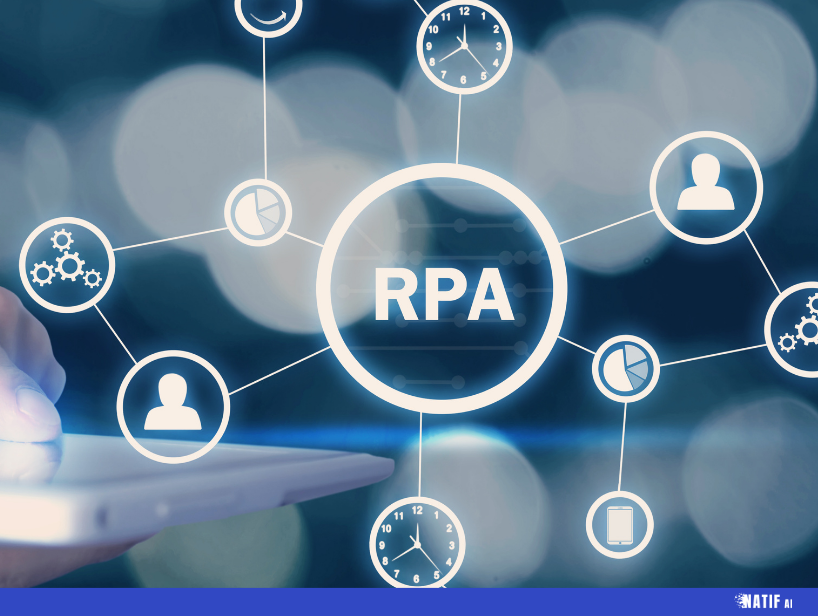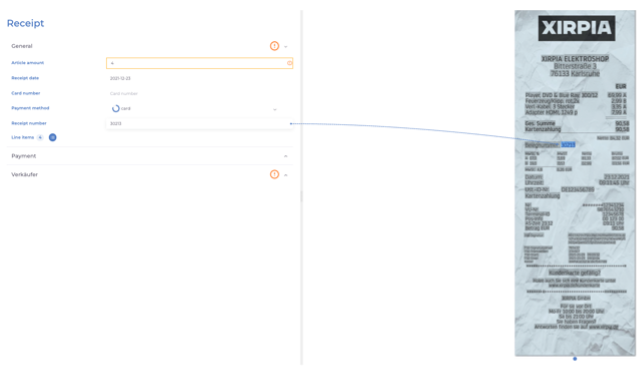Today, process managers are faced with the task of automatically processing highly individual and increasingly complex documents. This is where classic RPA solutions often reach their limits. This is why more modern technologies such as OCR (Optical Character Recognition) and IDP (Intelligent Document Processing) are needed to meaningfully expand the existing RPA system landscape and further increase the automation rate.
Robotic Process Automation (RPA): The status quo
Robotic Process Automation (RPA) helps companies to automate rule-based business processes. For this purpose, RPA bots are programmed to copy predefined workflows exactly and to execute the predefined steps one-to-one as they were learned. The advantages of this technology are obvious. Once the process rules have been defined and learned, they can be executed again and again by RPA software with high precision and speed, without the need for a human to do so.
These processes can be, for example, the following:
- Transfer data between two software systems
- Extract data from documents with always the same layout
- Execute transactions
- Perform calculations
- Execute database queries
These examples already give an idea of how diverse the use of RPA solutions is. However, it must be noted that RPA can only be applied to rule-based business processes and the technology does not act intelligently. For example, if we want to extract data from a form and transfer it to a downstream system, the software robot blindly performs this step over and over again. In this way, the bot assumes that the previously running processes were executed correctly and that the respective form also complies with the specified rules. In practice, such rules are often defined very differently:
- The layout of the documents to be processed is always the same.
- The information to be extracted is always in the same place.
- The information is available in one / more predefined formats.
- The text to be read out is always behind a fixed keyword.
If these rules are then not met, the RPA software faces problems and cannot execute the process step or, in the worst case, even extracts incorrect data.
Example
For instance, if the invoice number is at the top right of the document instead of at the top left, the desired information will not be found or incorrect information will be extracted. The same applies if the invoice number is usually specified in the XXX/YYYY/ZZZZ format, but on the document it is in the XXX-YYYY-ZZZZ format. Even then, it cannot be found.
Even though these examples may seem trivial at first glance, it is impossible to always define all potential special cases in advance. For this reason, the degree of automation in processing with pure RPA bots is often significantly less than 60 % and the workload also increases due to the definition of the many possible special cases.
Making RPA “intelligent”: Implementing Intelligent Document Processing (IDP)
In order to counter the problems of conventional RPA software described above, it is necessary to expand it with intelligent software modules. The means of choice for this is the introduction of artificial intelligence (AI) models, especially from the field of intelligent document processing (IDP). The advantage of IDP solutions is that they do not follow predefined if-then rules. They have a holistic understanding of documents and read them like a human. This means that the models no longer need to be shown how to extract the desired information based on many predefined rules. The model is simply shown what kind of information you are interested in. It then learns independently how to extract this information and what has to be considered during the extraction. In this way, documents can be interpreted correctly even though they have a layout that the software has never seen before. Or a document is sorted out and presented to a human again, because the software is not quite sure about the extraction. The desired confidence levels can also be individually defined here.

Here the BIC is not in the given field. However, since the IDP software knows that a BIC consists of either 8 or 11 digits, the 1 that is outside the field is also extracted.
Here the customer has a French IBAN which, unlike the German IBAN, consists of 27 characters instead of 22. Since the IBAN starts with “FR”, the software recognizes that it is a French IBAN and expects 27 characters as input.
Here, the document number on the receipt was correctly recognised and read in both cases. This is the case even if the receipt number, as in this example, is of different lengths, is in different places and is “announced” by different keywords (receipt no. vs receipt number).
These “rules” do not first have to be defined by a human, but the AI model learns them completely independently through training on test data sets. Here, even with small amounts of data, results can be achieved that are significantly higher than the results of conventional RPA software. In addition, the AI learns through the active learning approach with each document presented, so that the automation rate increases continuously with further data and is not infrequently well over 90 %. This is because IDP software observes rules that even a human often does not recognize as such. For example, IDP software automatically recognizes that a German IBAN beginning with DE normally has 22 characters. However, if the customer has a French IBAN that starts with FR, it has 27 characters. So IDP can derive the following rule: “If an IBAN starts with DE, I expect 22 characters. If the IBAN starts with FR, I expect 27 characters. If the respective length differs, I sort out the respective document and submit it again to a human for verification.” A human might not have even considered this special case and instead of the document being processed automatically, it would have had to be checked again manually and the rule would have had to be created manually afterwards. And this is just one special case out of infinite potential possibilities that the AI already recognises during training. This shows how the high automation rate through IDP comes about.
Automation through intelligent RPA: The importance of OCR
To successfully master the implementation of IDP, it is also important to understand the relevance of OCR for IDP software. After all, only when a document is correctly read by OCR the content can be correctly extracted. Thus, OCR quality sets the natural upper limit for the degree of automation of document processes.
That’s why we at natif.ai have developed our own
Deep OCR, which delivers unique quality. This understands handwriting in the same way as computer fonts, so that even handwritten documents and forms can be automated. In addition, when reading and processing documents for our customers, we understand the sensitivity of the data. Therefore, our solutions are compatible with the highest data protection conditions and fully
compliant with DSGVO and SCHREMS II.
Customise your own documents: The individualisation of RPA software
In order to automate individual documents and the extraction of information from them, you can train your own models independently on our
platform. To do this, you upload the desired documents, determine the information to be extracted and mark these on the documents provided. Different AI modules can be easily combined with each other via
low code and
own workflows can be created, which the documents and the extracted information then run through. In addition, our database already contains various pre-trained models for automating a wide range of document types.
How can natif.ai be integrated into existing RPA solutions?
With the easy-to-connect
API interface,
any common RPA software can be connected to and extended by our IDP solutions. Our OCR solutions with handwriting, classification and extraction algorithms are available for this purpose. Through the API, the results of the processing by our software are returned as structured data in
JSON format and are therefore quick and easy to connect.
Conclusion
The addition of more modern IDP solutions to RPA are inevitable if the next level of automation is to be pursued. This is especially important for the automation of individual documents and forms, which vary from company to company. Whether in the onboarding process for banking and insurance customers, mailroom automation or logistics. Our IDP solutions are available for (almost) all use cases – feel free to contact us!





